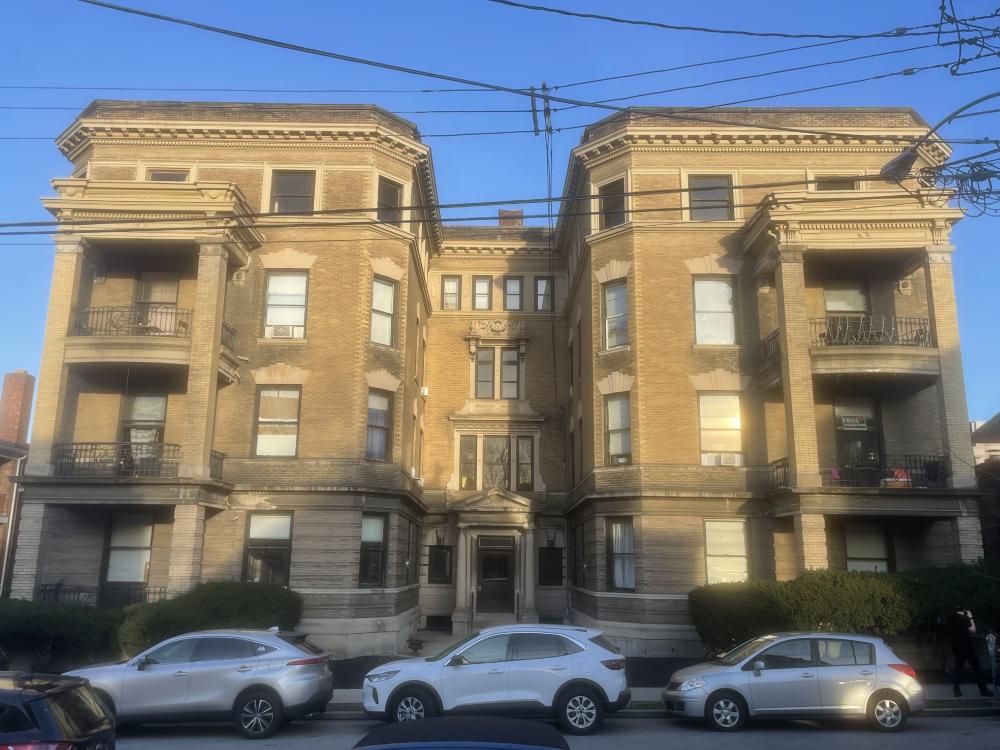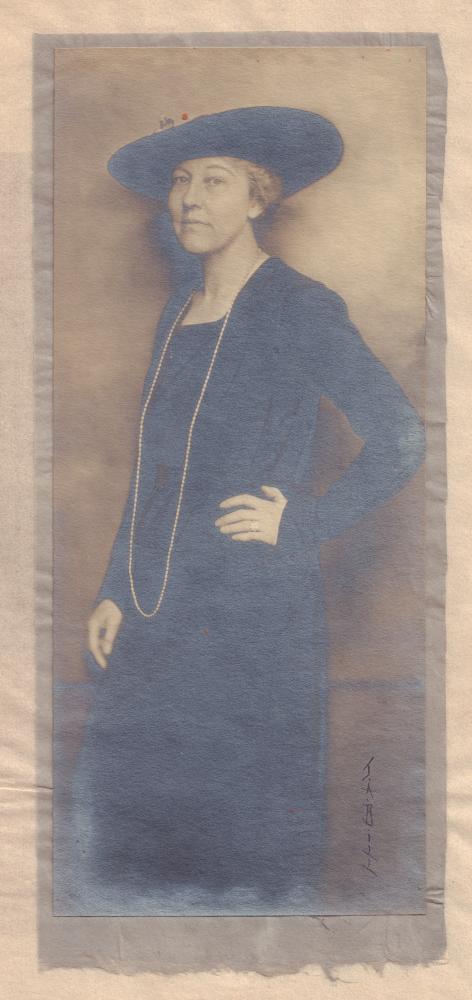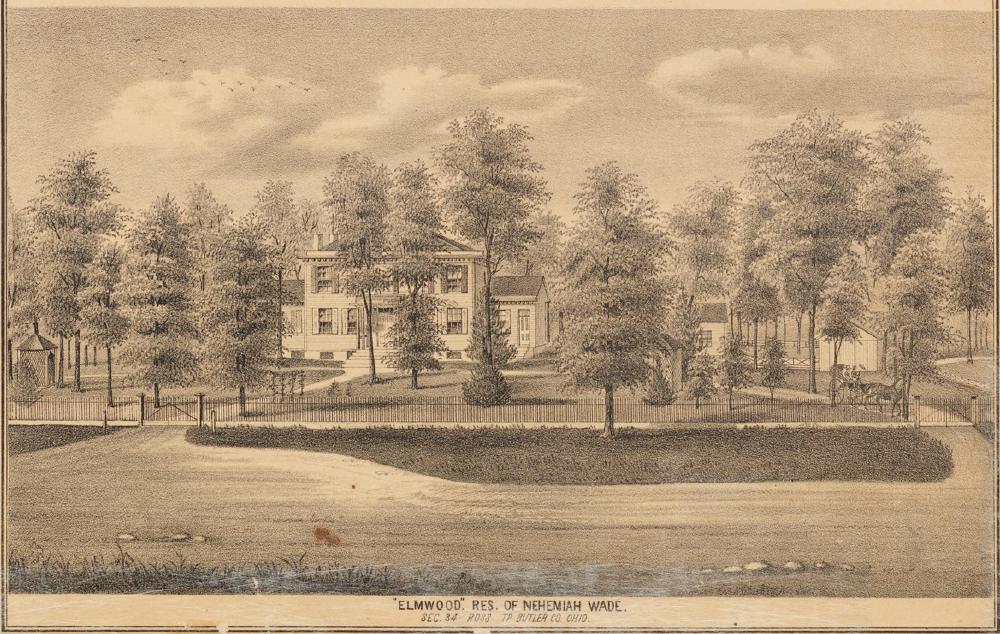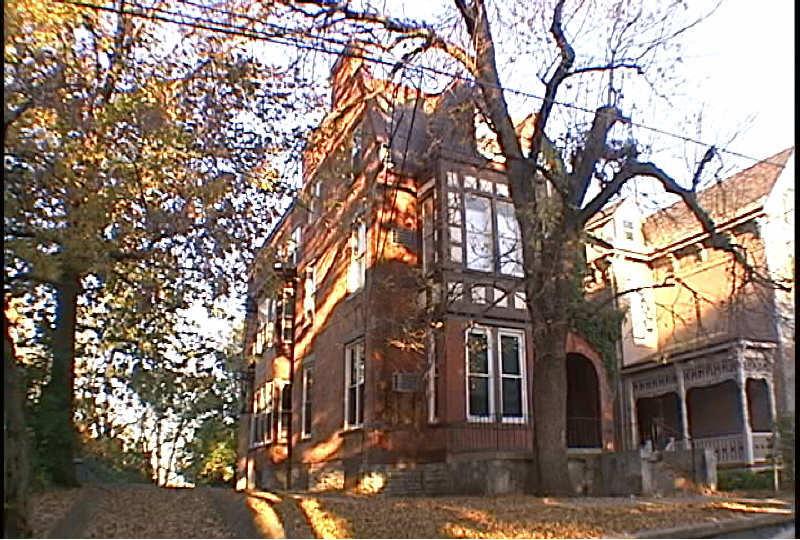The Delmoor Flats was Home to Professional Women
Including Writer Mary Louise MacMillan

The Delmoor Flats, built in 1898, was one of a new type of multi-family dwelling. “Flats” included spacious units with grand lobbies, servants’ quarters, and other shared amenities. The name “flats” set them apart from tenements, the more common form of multi-family dwellings. These flats were the ideal place for professional women to live and work free from domestic drudgery and the demands of family life. From 1918 to 1936, the Delmoor was home to local poet and playwright Mary MacMillan and her “partner” Loueen Pattee (who is the subject of another post) providing a vital center for their creative work.
From 1918 to 1936 the Delmoor Flats at 3414 Telford Street in Clifton was home to poet, playwright, and suffragist, Mary Louise MacMillan. MacMillan’s apartment included modern conveniences like hot and cold running water, indoor plumbing, radiator heat, and electric light and gas stoves which were significant improvements from the nineteenth-century buildings where MacMillan grew up. These modern amenities and the building’s location on a streetcar line in the center of Clifton’s business district gave MacMillan and her partner Loueen Pattee, time to work, write, and organize, free from domestic constraints.
Mary MacMillian was born on June 19, 1870, and grew up on her grandfather Nehemiah Wade’s Elmwood estate in Venice (now Ross), Ohio. The family moved from Ross to Hamilton, and then to 1915 Bigelow Street in Mount Auburn in 1888. Mary attended two years at Wells College, then transferred to feminist stronghold, Bryn Mawr College in 1890. After her father died in 1892, the incredibly productive MacMillan lived with her mother, Sarah Wade MacMillan, on Bigelow Street until Sarah’s death 25 years later.
Mary MacMillan published three volumes of short plays and a book of original poetry. She was published in magazines, and had at least three of her poems set to music as popular songs. Her play A Fan and Two Candlesticks was the second play to air on national radio when it was performed on WLW on November 8, 1922, and another, The Shadowed Star, aired shortly thereafter. MacMillan was the press secretary for the Hamilton County Suffrage Association as women fought unsuccessfully for statewide suffrage in 1912-1913 and helped to found several Cincinnati organizations including the Cincinnati College Club, and the Cincinnati branch of the MacDowell Society. As president of the Ohio Valley Poetry Society, MacMillan brought acclaimed poets and writers, including Pulitzer Prize winners Edna St. Vincent Millay and Amy Lowell, to Cincinnati.
In 1918 Mary moved into the Delmoor with the woman the 1920 census called her “partner,” Loueen Pattee. “Partner” is a very unusual census designation, and was later crossed out and replaced with an abbreviation for border, but it turns out that partner was actually a more accurate description of the relationship between MacMillan and Pattee. It is often difficult to know if two women living together had romantic connections, but because MacMillan was a poet, she made it easy. The poem she published after Pattee’s untimely death in 1921 about longing to kiss her lips again made the nature of the partnership very clear.
Beyond her poems, one other clue into MacMillan’s life can be found in Edna St. Vincent Millay’s papers in the Library of Congress. During Millay’s visit in 1920 MacMillan took photographs which provide a rare, if dark, glimpse of her apartment’s interior.
MacMillan died at the Delmoor on July 16, 1936. A memorial published in the Cincinnati Times Star called her poetry, “strong-voiced and full-bodied,” and when a cantata she wrote was finally performed in December 1937, the conductor hoped that the piece would serve as a memorial to “the vivid genius of the author, a brilliant woman, and a widely acclaimed major poet of Cincinnati.”
MacMillan’s poems allow us to know her heart even now, almost ninety years after her death and offer a rare glimpse into her life at the Delmoor Flats. As Mary MacMillan moved from her grandfather’s estate in Venice, to her mother’s house on Bigelow Street, and then to the Delmoor, she transitioned from a young lady of the Victorian age to a modern professional woman. A poem MacMIllan published in 1925 explored the differences between her Grandfather’s estate and her modern life at the Delmoor. The poem, entitled “Rose and Syringa” closes with the lines:
I will go away from the old house,
I will go away and lead my own life.
I must dream my own dreams, love my own loves.
Have my own adventures,
Even if I am cramped in a small city flat,
I must have my mind free.
I will go back to the old house and love them,
But I will not stay there
To die of the sweet poison of their rose and syringa.
I will go out in my own world,
Where my own love and adventure wait for me,
I will go away from the old house.
Images



